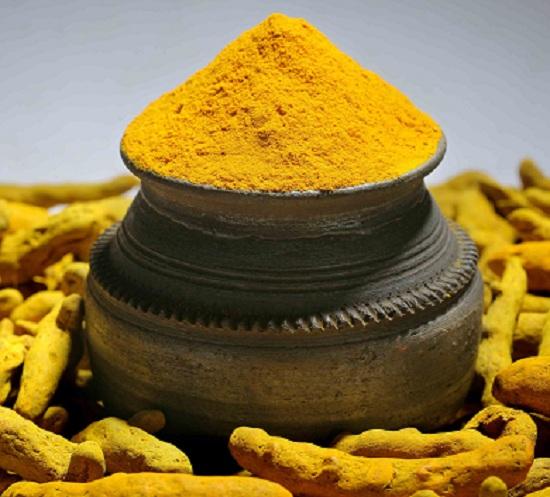வெளிநாடுகளுக்கும் வெளியூர்களுக்கும் சுற்றுலா சென்று வந்தவர்களைப் பார்த்து நாம் கேட்பது, ‘அந்த ஊரில் என்ன பார்த்தீர்கள்?’, ‘அங்கு வானிலை எப்படி இருந்தது?’ என்பது மட்டுமல்ல... ‘அங்கே உணவில் என்ன ஸ்பெஷல்?’ என்பதும்தான். அப்படி ஒவ்வோர் நாட்டுக்கும், ஊருக்கும் எனத் தனித்துவமான உணவு வகைகள் உள்ளன. அவை அந்தந்த இடத்துக்கே உரிய சுவையையும் மணத்தையும் கொண்டவையாகவும் இருக்கும். தமிழ்நாட்டில் மற்ற நாட்டைச் சேர்ந்த உணவகங்களும், மற்ற நாடுகளில் தமிழகத்தின் உணவகங்களும் பரவலாக இருப்பதற்கு காரணமும் அதுதான். உணவுகளுக்குப் பிரத்யேகமான சுவையைக் கொடுப்பது அதில் சேர்க்கப்படும் சேர்மங்கள், குறிப்பாக மசாலாப் பொருள்கள். நம் தமிழகத்தையே எடுத்துக்கொள்ளலாம். உணவுக்குப் பேர்போன நம் செட்டிநாட்டுக் குழம்பு, திருவரங்கம் புளியோதரை, இஸ்லாமிய பிரியாணி, கொங்கு கதம்ப சாதம், நெல்லை சொதி... என ஊருக்கு ஊர் தனித்தனி சுவைமிக்க உணவுகள் ஏராளம். இவற்றுக்குக் காரணமாக இருப்பது மசாலாக்களும் அவற்றைத் தயாரிக்கும் முறையும்தான்.

அது குழம்போ, கறியோ அவை மணக்கவும் சுவைக்கவும் சமைப்பவர்கள், மசாலாக்களை மிகுந்த அக்கறையுடன் தயாரிப்பதே அதற்கு முக்கியக் காரணம். வீடுகள் மட்டுமல்ல... இன்றும் சில பிரபல உணவகங்கள், தங்கள் உணவின் தனிப்பட்ட சுவைக்குக் காரணமாகக் கூறுவது மசாலாக்களைத்தான். வழிவழியாக வந்த அந்தப் பாரம்பர்ய மசாலாக்கள்தான் அந்தந்த வட்டாரத்துக்கும், இனத்துக்கும், உணவகங்களுக்கும் தனித்தன்மையை அளித்துவருகின்றன.
மசாலா என்பது வெறும் மிளகாய், மல்லி, மிளகு எனச் சில பொருள்களைச் சேர்த்தது மட்டுமல்ல... அந்தந்த இடத்துக்கு ஏற்ற தட்பவெப்பநிலை, உடலின் தன்மை, உணவின் தன்மை போன்றவற்றைக் கருத்தில் கொண்டு தயாரிக்கப்படுபவைதான் மசாலாக்கள். பாரம்பர்ய மசாலாக்கள் உடலுக்குத் தீங்கு ஏற்படாதபடி தயாரிக்கப்பட்டவை. மல்லி என்றால் நாட்டுமல்லி... அதுவும் இந்த இடத்தில் விளைந்த மல்லி, மஞ்சள் என்றால் இந்த வகை மஞ்சள், மிளகாய் என்றால் அதற்கென்று ஒரு வகையைத் தேடித்தேடிப் பார்த்து வாங்கித் தயாரித்தார்கள். ஒரு வகையில் பொடிகளாகவும், மற்றொரு வகையில் தேவைக்கேற்றவாறு உடனடியாகவும் மசாலாக்களைத் தயாரித்துப் பயன்படுத்தினார்கள். பொடிகள் என்றால், தேவையான பொருள்களைப் புடைத்து, சுத்தம் செய்து, தேவையற்ற பாகங்களை நீக்கி, வெயிலில் உலரவைத்து, தேவைப்பட்டால் வறுத்து பின் அரைத்து வைத்துக்கொள்வார்கள். பிறகு அன்றாடச் சமையலில் பயன்படுத்துவார்கள். அந்தக் கலையே அவர்களின் சமையல்களுக்குத் தனித்தன்மையும் உலகப்புகழும் கிடைக்கக் காரணமாக இருந்தது.

இன்றோ, பலருக்கும் சமைப்பதற்கே நேரமில்லை, பிறகு எப்படி மசாலாக்களை அரைப்பது என்கிற நிலைமை. அருகில் இருக்கும் கடைகளில் இருக்கவே இருக்கின்றன, விதவிதமான சுவைகளில் எல்லா மசாலாக்களும்... வாங்கிக்கொள்ளலாம் என்றே பலரும் எண்ணுகிறார்கள். நினைத்த நேரத்தில் நினைத்த மசாலாவைப் பயன்படுத்தி, சுவையாகச் சமைத்து அசத்தலாம் என்ற எண்ணம் பலருக்கும் உண்டு. நிச்சயம் சமைக்கலாம்... குழந்தைகள் கேட்கும் நேரத்தில் பாவ் பாஜி செய்து கொடுக்கலாம்... நிமிடத்தில் மஞ்சள்தூள் தொடங்கி சாம்பார் பொடி, ரசப்பொடி, கரம் மசாலா மட்டுமல்ல, அனைத்து அசைவ உணவுகளுக்கும் தனித்தனி மசாலாக்கள் தயாரிக்கலாம். சுவை ஒருபக்கம் இருக்கட்டும், இன்று ஹோட்டலுக்குச் சென்றுதான் வியாதியை வாங்கிவர வேண்டும் என்பதில்லை. வீடுகளிலேயே இவற்றால் பல உபாதைகளும், வாழ்வியல் நோய்களும் அதிகரித்துக்கொண்டுதான் இருக்கின்றன. இதைப் பலரும் யோசித்துப் பார்ப்பதில்லை.
கடைகளில் கிடைக்கும் இதுபோன்ற இன்ஸ்டன்ட் மசாலாக்கள் `தரமானவைதானா?’ என்றால் நிச்சயம், இல்லை. இவற்றில் கலந்திருக்கும் சுவை, மணமூட்டிகள், ரசாயனங்கள், பூச்சிக்கொல்லிகள் மற்றும் தேவையற்றப் பொருள்களால் நமக்கு ஏற்படும் உடல்சார்ந்த தொந்தரவுகள் அதிகம்.

பொதுவாகவே தானியங்களிலும் மற்ற உணவுப் பொருள்களிலும் கற்கள், கழிவுகள், களிமண் போன்றவற்றைக் காய்ந்தநிலையில் பார்க்கலாம். இவற்றையும் சேர்த்துத்தான் பல நேரங்களில் இதுபோன்ற மசாலாப் பொடிகள் அரைக்கப்படுகின்றன. இவற்றால் சாதாரண வாந்தி, பேதி போன்றவை தற்காலிகமாக ஏற்படலாம். காலப்போக்கில் நோய் எதிர்ப்புச் சக்தி குறைவதன் காரணமாக வேறு பல நோய்கள் ஏற்படவும் வாய்ப்புகள் அதிகம்.
மஞ்சள், ஒரு சிறந்த கிருமி நாசினி. ஆனால் வீட்டில் முழு மஞ்சளை வாங்கிச் சுத்தம் செய்து அரைக்காமல், கடையில் மஞ்சள்தூளை வாங்குகிறோம். அதில் கலந்திருக்கும் ரசாயனங்களால் பல நோய்கள் ஏற்படுகின்றன. `குர்குமின்’ என்ற மஞ்சள் நிற இயற்கை வேதியியல் பொருள் மஞ்சளில் இருக்கிறது. ஆனால், இன்றோ இதில் ரசாயன மஞ்சள் நிறத்தைச் செயற்கையாகச் சேர்க்கின்றனர். இதனால் புற்றுநோய் வரவும் வாய்ப்புகள் உள்ளன.
`பாரம்பர்ய சுவையில் சாம்பார் பொடி’ என்று வெளியாகும் விளம்பரத்தைப் பார்த்து அதை வாங்குபவர்கள் அவரவர் பாரம்பர்யத்தை மறந்தது மட்டுமல்ல இங்கு பிரச்னை... அந்த மசாலாத் தூள்களில் சேர்க்கப்பட்டிருக்கும் ரசாயனங்ககளும் உடலுக்குக் கேடுவிளைவிக்கும் நச்சுக்களும்தான் நோய்களுக்கு ஒரு வகையில் காரணமாகின்றன. மிளகாய்த்தூளில் செங்கல் தூளும், நிறமூட்டிகளும் மட்டுமல்ல... குழம்பு அடர்த்தியாக இருக்க வேண்டும் என்பதற்காகக் கொழகொழக்கும் பொருள்களும், கிழங்கு மாவுகளும் சேர்க்கப்படுகின்றன. இதனால் உடல் பருமன், தேவையற்ற கொழுப்புகள் உடலில் சேர்வது போன்றவையும், அஜீரணமும் ஏற்படுகின்றன.

லீட் குரோமேட் (Lead chromate), மெடனில் மஞ்சள் (Metanil Yellow) நிறங்கள் கிட்டத்தட்ட அனைத்துத் தென்னிந்திய மசாலாப் பொடிகளிலும் சேர்க்கப்படுகின்றன. இதனால் நரம்பியல் நோய்களும், புற்றுநோயும் வர அதிக வாய்ப்புகள் உள்ளன.
சீரகம், சோம்பு போன்றவற்றில் அதன் பச்சை நிறத்தைப் பெற பல ஆபத்தான நிறமூட்டிகள் சேர்க்கப்படுகின்றன. மிளகில் அதன் பளபளப்புக்குச் சில மினரல் எண்ணெய்களும், பப்பாளி விதைகளும், கடுகில் சில வகை விதைகளும் சேர்க்கப்படுகின்றன.
கடைகளில் கிடைக்கும் பாக்கெட்டுகளில் அடைக்கப்பட்ட மஞ்சள்தூள், கரம் மசாலா, குழம்புப் பொடி, இட்லிப் பொடி, சாம்பார் பொடி, கறிக்குழம்பு மசாலாப் பொடி, மிளகாய்ப்பொடி, கோழிக்குழம்பு பொடி, கோழி வறுவல் மசாலா, மீன் குழம்புப் பொடி, மீன் மசாலாப் பொடி என்று பொடிகளின் வரிசையை அடுக்கிக்கொண்டே போகலாம். அவற்றில் கல், மண், குப்பை, ஸ்டார்ச், கேசர் பருப்புத் தூள், புளியங்கொட்டை தூள், புல்வெளி தூள், மரப்பட்டை, கறித்தூள், பூச்சிக்கொல்லிகள், ரசாயனங்கள், நிறமூட்டிகள், சுவையூட்டிகள்... எனச் சேர்க்கப்படும் பட்டியலுமே வெகு நீளம். இந்த இரண்டு பட்டியல்களுக்குப் போட்டி உள்ளதோ இல்லையோ, வீட்டில் நாமே இவற்றைத் தயாரிக்காமல் கடைகளில் வாங்கிப் பயன்படுத்தினால் நோய்களின் பட்டியலும் நீளத்தான் செய்யும்.
ரோடாமைன் (Rhodamine), சூடான் டை (Sudan Dye), மாலாச்சிட் நிறம் (Malachite green), மெடனில் மஞ்சள், லீட் குரோமேட், டார்ட்ராஸைன் (Tartrazine) போன்ற ரசாயனங்கள் இவற்றில் சேர்க்கப்படுகின்றன. இவற்றால் வளர்ச்சிக் குறைபாடு, கல்லீரல், சிறுநீரகம், இதயம், நுரையீரல், எலும்புகள், கண், தோல், கர்ப்பப்பை, வயிறு போன்றவை அதிகமாகப் பாதிப்படையும். சிவப்பணுக்களின் செயல்பாடுகளில் கோளாறுகள், ஆண்மைக்குறைவு, மலட்டுத்தன்மை, மலச்சிக்கல் போன்றவை ஏற்படலாம்.
ஒரே நாளில் எந்தப் பெரும் பாதிப்பையும் இந்தப் பொடிகள் ஏற்படுத்திவிடுவதில்லை. என்றாலும், இவற்றுக்கு விலையாக, குறிப்பிட்ட வயதைத் தாண்டியவுடன் நோய்கள் ஒவ்வொருவரையும் தாக்கத் தொடங்கிவிடுகின்றன. இருபது வருடங்களுக்கு முன்னர் 90 வயதிலும் ஆரோக்கியமாக இருந்த நமது முன்னோரின் வழியில் வந்த நாம், இன்று நாற்பதைத் தாண்டியதுமே மருத்துவமனைக்கு மறைமுகமாக ஒப்பந்தம் செய்துகொள்ளும் நிலைமை ஏற்படுகிறது. மருந்து, மாத்திரைகள் இல்லாத வாழ்க்கை என்பதையே பலரால் நினைத்துக்கூட பார்க்க முடியாத நிலை உருவாகிவிட்டது.
இதிலிருந்து நம்மையும் நம் குழந்தைகளையும் காத்துக்கொள்ள வீட்டிலேயே குறைந்த அளவில் மசாலாக்களை தயாரித்துப் பயன்படுத்துவது சிறந்தது. அதிலும் அவரவர் வீடுகளில் அவரவர் முன்னோர் தயாரித்ததுபோல் தயாரிப்பது உடல் ஆரோக்கியத்தை மேம்படுத்தும்.
அவரவர் வாழ்ந்த இடம், நீர், தட்பவெப்ப நிலை, பழக்கவழக்கங்கள் போன்றவற்றைக் கொண்டு மரபணு அமையப்பெற்றிருக்கும். அந்தந்த மூதாதையர் வழியில் வந்தவர்கள் அதற்கேற்றவாறு தங்களின் மசாலாக்களையும், உணவையும் அமைத்துக்கொண்டால், சீரான உடல்வாகையும் ஆரோக்கியத்தையும் பெறலாம். அதிலும் அவரவர் வாழும் நிலங்களிலிருந்து பெறப்படும் உணவுப் பொருள்கள் அன்றாட சமையலுக்குப் பொருத்தமானவை.
ஒவ்வொருவரும் அவரவர் வேலை, தொழில் போன்றவற்றுக்கு ஏற்ப மிளகாய் காரத்தை குறைத்தும், மிளகை அதிகமாகவும், மல்லியைத் தேவைக்கேற்பவும், அவற்றில் பருப்புகளையும் சேர்த்து மிளகாய்த்தூளை அரைப்பதுண்டு. காலம் காலமாக அவற்றை உண்ட நாம் கடந்த சில ஆண்டுகளாக இப்படிக் கடையில் விற்கப்படும் மசாலாப் பொருள்களைப் பயன்படுத்துவதால் அஜீரணம் ஏற்படுகிறது. இதனால் வயிறு உப்புசம், வயிற்று வலி, அல்சர் போன்றவையும் ஏற்படுகின்றன.
எனவே, மசாலாவுக்கான பொருள்களை வாங்கி, லேசாக வறுத்து அரைத்துவைத்துக்கொண்டு பயன்படுத்துவதே சிறந்தது. மஞ்சளை அரைகிலோ அளவிலும், மிளகாய்த் தூள், குழம்புப் பொடி ஆகியவற்றை கிலோ கணக்கிலும் நாமே அரைத்துப் பயன்படுத்துவது மிக மிக நல்லது.




